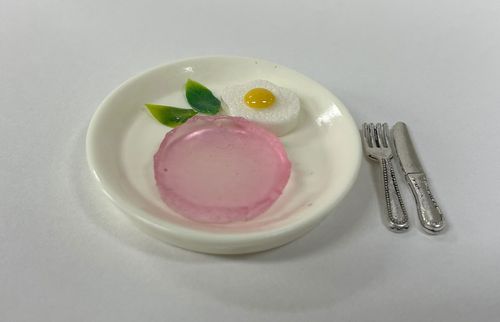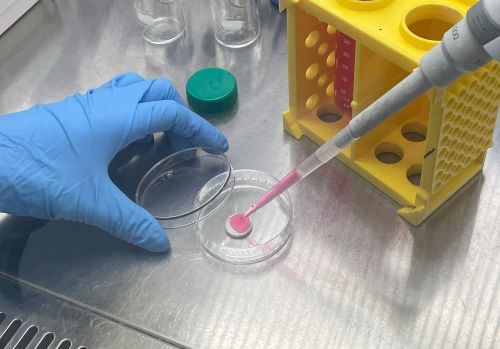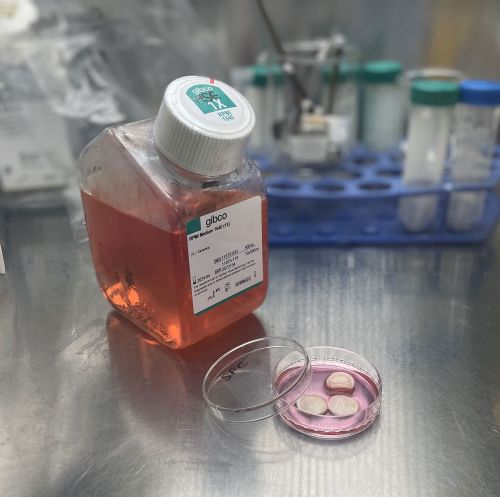Do you prefer that burger medium rare, well done, or lab-grown?
Lab-grown meat, also called cultured meat or cell-based meat, is emerging as an alternative to conventional meat, offering the same nutritional benefits and sensory experience without the carbon footprint.

It is made by growing animal cells directly in the lab, grown on 3D structures called “scaffolds,” which allow the cells to multiply, eliminating the need to breed and raise animals.
Scientists have created everything from cultured meatballs to 3D-printed steaks. While some previous versions of cultured beef mimicked the look and texture of real meat, a new study says they neglected one key element: taste.
But in the study, published Tuesday in the journal Nature CommunicationsResearchers claim to have cracked the code and developed cultured meat that generates “grilled beef flavors when cooked.”
“Taste is the most important element for cultured meat to be accepted as real,” Milae Lee, a co-author of the study and a doctoral student in the department of chemical and biomolecular engineering at Yonsei University in Seoul, told CNN.
To mimic the taste of conventional meat, Lee and his colleagues recreated the flavors generated during the Maillard reaction, a chemical reaction that occurs between an amino acid and a reducing sugar when heat is added, giving the burger that delicious charred taste.

They achieve this by introducing a switchable flavor compound into a gelatin-based hydrogel, to form what is called a functional scaffold, which Lee described as the “basic composition of cultured meat.”
The flavor compound, which consists of an aromatic group and two linker groups, remains in the matrix until heated. It “lights up” when cooked for five minutes at 150 degrees, releasing meaty flavors in a replica of the Maillard reaction, Lee said.
Since cultured meat is not yet edible, the researchers used an electronic nose, which “mimics the human nasal system,” Lee said, to test the aromas of cultured meat and see how they compare to conventional meat.
For this study, the researchers focused on adding “meaty” and “savory” flavors, Lee said, but the flavoring agent could also be adapted to incorporate other flavors, like the fat that comes from a juicy ribeye, for example.
The researchers focused on the scientific aspects of how lab-grown meat tastes rather than commercializing the process. That’s why the scientists used nonfood substances. But they believe the strategy can be applied to conventional edible substances, Lee said.

While Australia lags behind, wages in these countries are rising
They also plan to reduce animal products used in the process, including gelatin-based hydrogel, to achieve lab-grown meat that is almost entirely free of animal-derived substances.
According to UN data, livestock farming is responsible for 6.2 billion tonnes of carbon dioxide released into the atmosphere each year. This represents about 12% of all human-caused emissions. Beef production is the largest carbon emitter.
“Lab-grown meat has enormous potential to contribute to sustainable diets, but its flavor is likely only a small part of its success,” said Jennifer Jacquet, a professor of environmental sciences at the University of Miami, who was not involved in the research.
“Whether and how quickly lab-grown meat becomes acceptable or widespread depends largely on the actions of powerful meat and dairy companies,” she told CNN.

The United States has already reacted. In May, Florida Governor Ron DeSantis banned the sale of lab-grown meat in his state, in a move he said was to protect farmers and ranchers.
“Today, Florida is fighting back against the global elite’s plan to force the world to eat meat grown in a petri dish or insects to achieve their authoritarian goals,” DeSantis said in a statement at the time.
But elsewhere in the United States, it’s possible to get lab-grown chicken, but not yet beef.
In 2023, the U.S. Department of Agriculture gave the green light to two companies — Good Meat and Upside Foods — to begin selling their cultured chicken products, becoming the second jurisdiction after Singapore where consumers could buy it.
The companies launched their chicken in high-end restaurants in the United States last year.
In May, Huber’s Butchery in Singapore became the first retail store to sell cultured meat, a Good Meat pulled chicken made with just 3 percent cultured meat. The rest is plant-based ingredients, according to Good Meat’s website.
Now that the research team in South Korea has found a piece of the puzzle to improve the flavor of lab-grown meat, the next challenge is to marry that taste with cultured meats that better mimic the look and texture of the real thing — the pink gelatinous mass is unlikely to be on the menu.